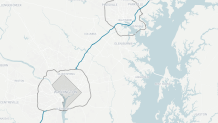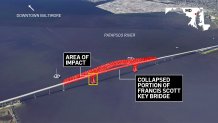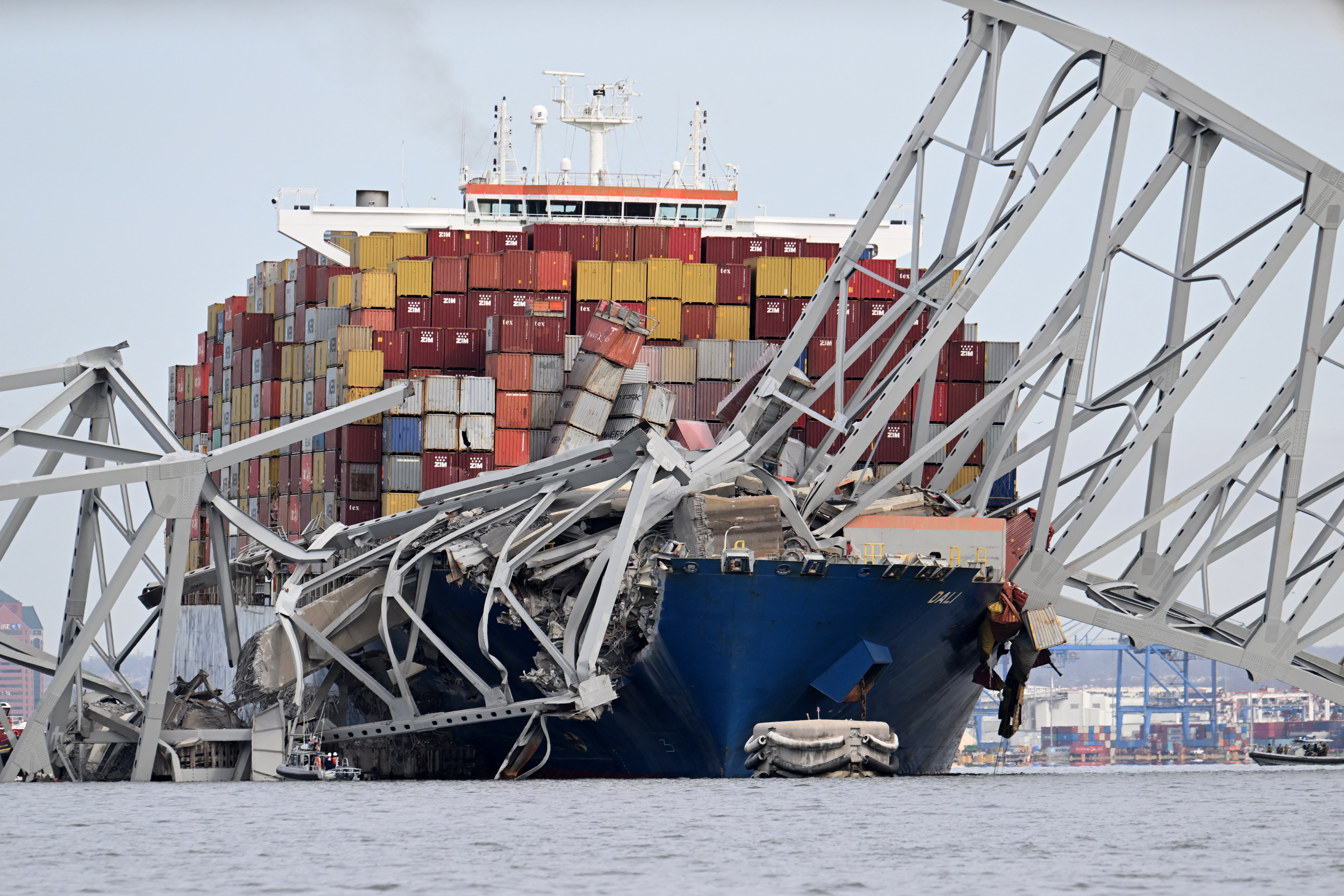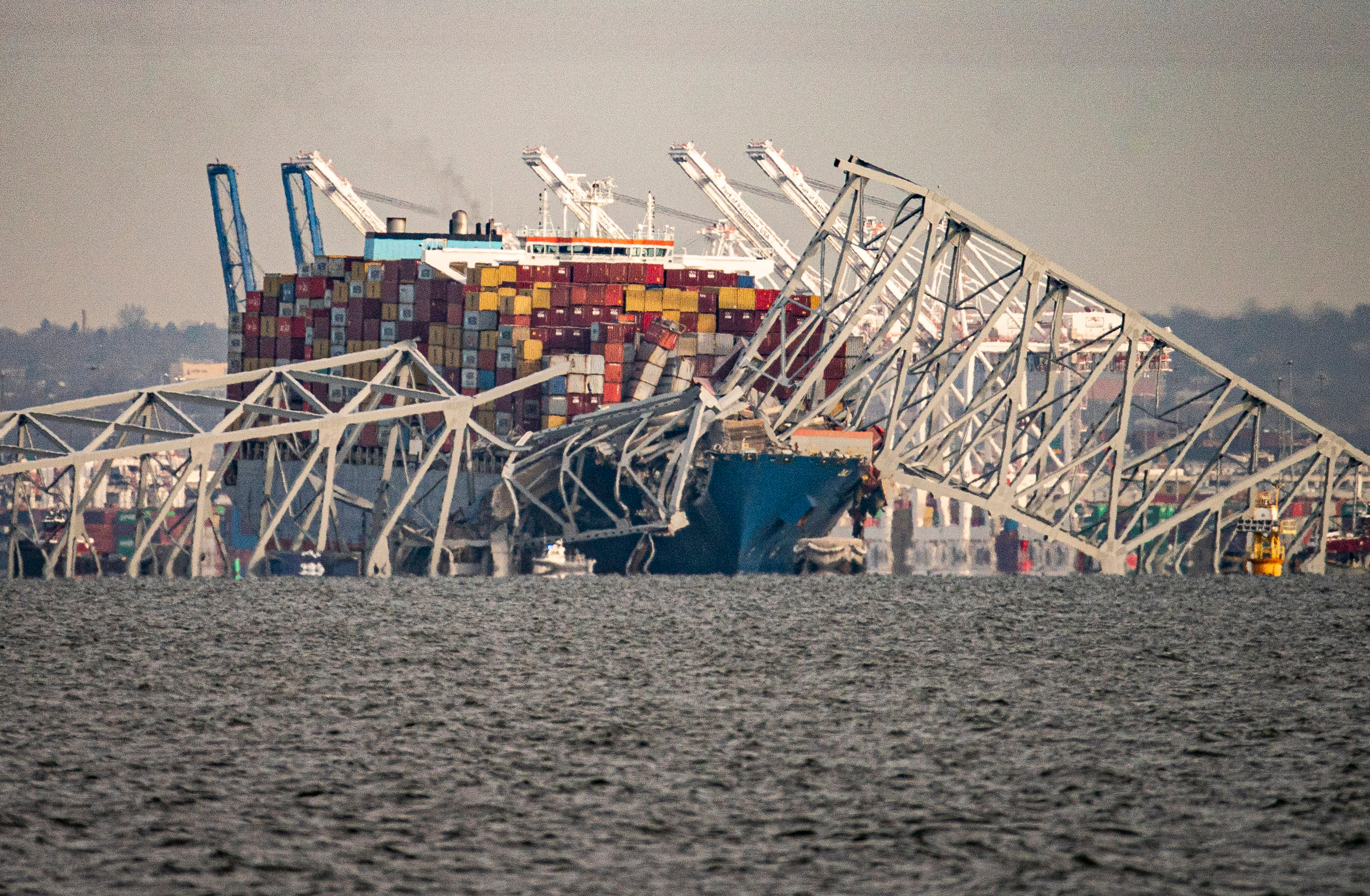What to Know
- A container ship lost power and rammed into the Francis Scott Key Bridge, a major bridge in Baltimore, Maryland, early Tuesday, causing it to collapse into the Patapsco River below.
- Search and rescue efforts are underway after several vehicles fell into the river as a result of the catastrophic incident.
- The bridge sees quite a bit of traffic with more than 30,000 cars using it daily, according to the director of communications for the Baltimore Fire Department.
A container ship lost power and rammed into the Francis Scott Key Bridge, a major bridge in Baltimore, Maryland, early Tuesday, causing it to collapse into the Patapsco River below. Search and rescue efforts are underway after several vehicles fell into the river as a result of the catastrophic incident.
The bridge was one of the longest truss bridges in Maryland. The bridge sees quite a bit of traffic with more than 30,000 cars using it daily, according to the director of communications for the Baltimore Fire Department.
Here are some quick facts about the Francis Scott Key Bridge:
Get Tri-state area news and weather forecasts to your inbox. Sign up for NBC New York newsletters.
The bridge was renamed after a patriotic lawyer and writer
The bridge opened in 1977, more than four and a half years after it was scheduled to open, according to an archived article from The Baltimore Sun. The bridge was renamed after Francis Scott Key, a lawyer from Baltimore and amateur poet who wrote the text of what would become the U.S. National Anthem, "The Star-Spangled Banner."
The Key Bridge was located in an area steeped in American history as scholars believed the bridge was about 100 yards off of the site where Francis Scott Key witnessed the bombardment of Fort McHenry in 1814 -- an event that inspired him to pen the words that would become the nation's anthem.
However, the bridge was actually known as as the Outer Harbor Crossing until it was renamed in 1976, while still under construction, according to an archive article from The Baltimore Sun. It is also known as simply the Key Bridge or Beltway Bridge.
Thousands of vehicles crossed the bridge daily
Kevin Cartwright, director of communications for the Baltimore Fire Department, said that that some cargo appeared to be dangling from the bridge, which spans the Patapsco River, a vital artery that sees more than 30,000 cars a day. Along with the Port of Baltimore, it is a hub for shipping on the East Coast.

It was one of the longest bridges of its kind
The Francis Scott Key Bridge was a steel truss bridge. These types of bridges are constructed by joining numerous interconnected triangles, known as trusses, according to Britannica.com. Since triangles cannot be distorted due to stress, these bridges are often used as "a stable form capable of supporting considerable external loads over a large span." In its inception, they were first made out of wood, then as time went on different materials have been used, including iron, steel and even a combination of all the aforementioned.
The bridge spanned more than a mile -- specifically the Key Bridge was 1.6 miles long. Including its connecting approaches, the bridge project was 10.9 miles in length.

Tragic bridge collision and collapse
In the early hours of Tuesday, a massive cargo ship rammed into the bridge causing it to snap and plunge into the river below.
Speaking at a news conference Tuesday morning, Maryland Gov. Wes Moore said the operators of the ship issued a mayday call moments before the crash, warning they lost power. This mayday enabled authorities to limit vehicle traffic from entering the span.
Maryland Transportation Secretary Paul Wiedefeld said at least eight people were on the Key Bridge at the time of its collapse. Two people were pulled from the waters under the bridge, one in serious condition, according to Baltimore Fire Chief James Wallace. Wiedefeld said the search is continuing for the other six who were working on the bridge repairing masonry and potholes at the time.
Earlier Tuesday, officials said sonar indicated that there are vehicles in the water, where the temperature was about 47 degrees Fahrenheit in the early hours of Tuesday, according to a buoy that collects data for the National Oceanic and Atmospheric Administration.
Authorities said a crew was working on the bridge at the time and it was not immediately clear if the cars detected in the water belonged to the workers, who typically park on the bridge during their shifts.



